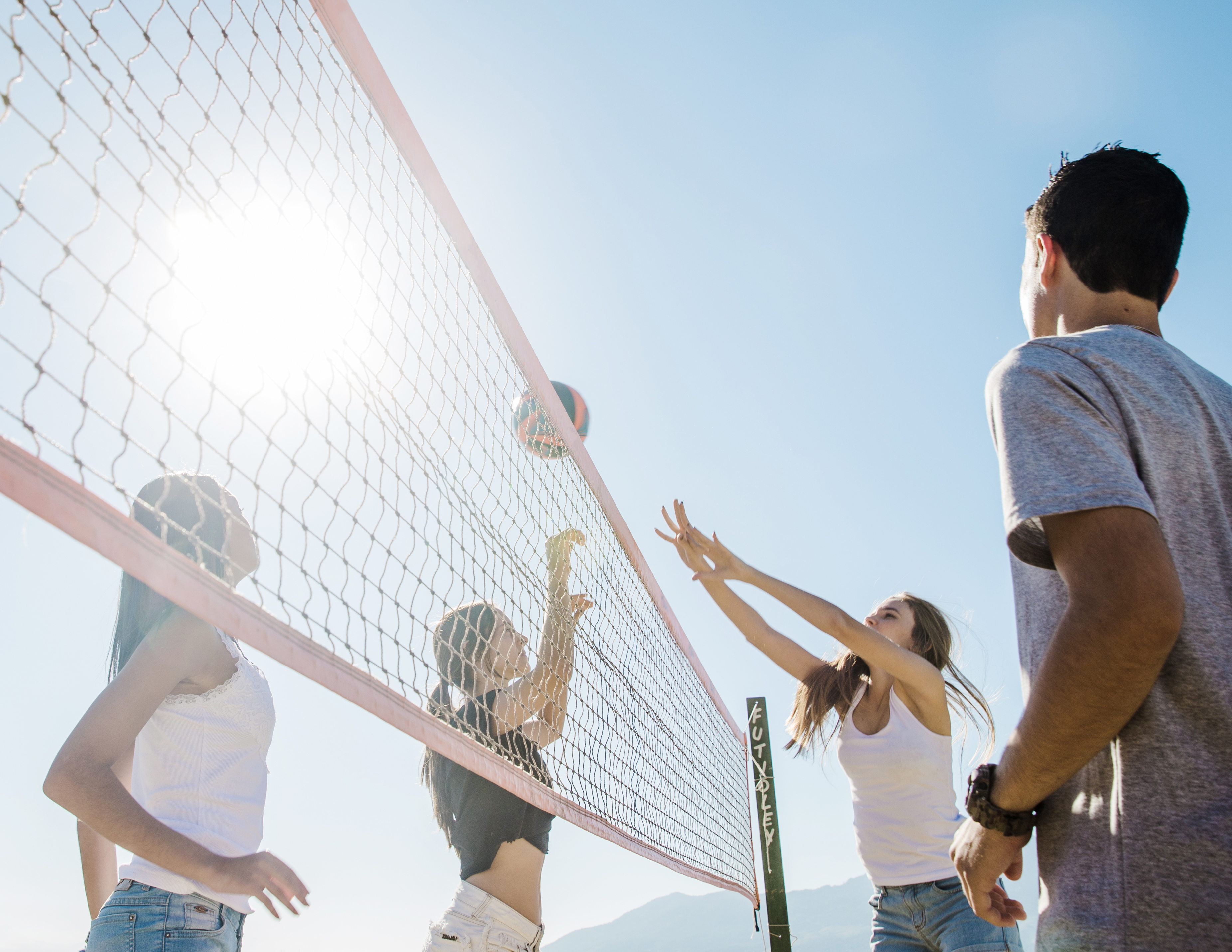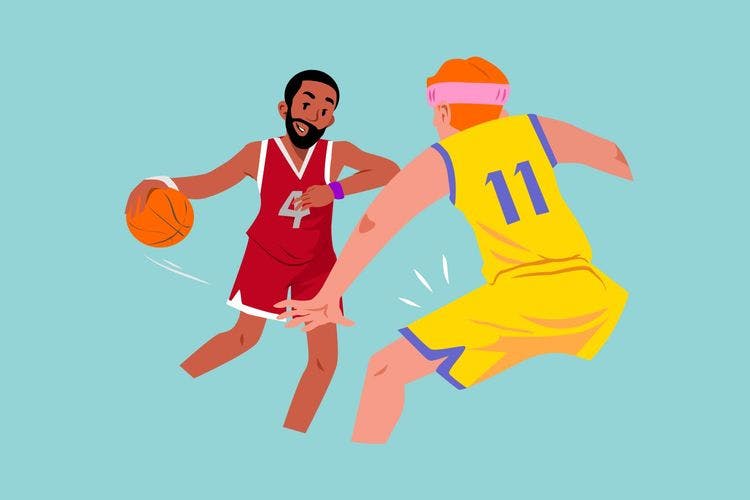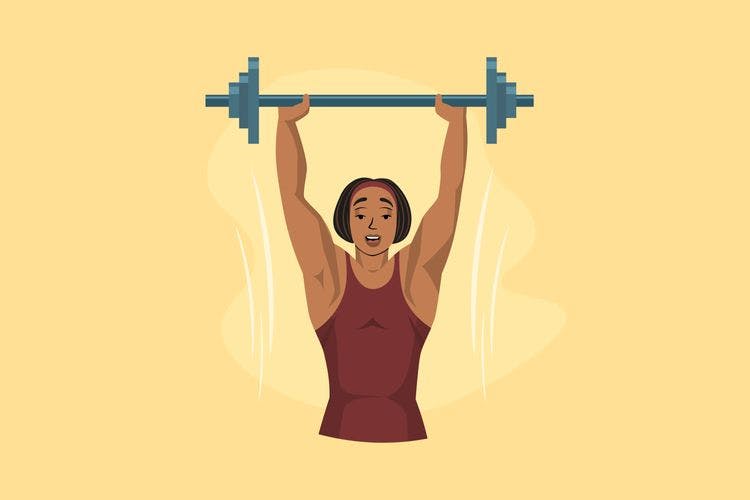Choosing the Best High School Sports: A Comprehensive Guide

Contents
It's back-to-school time, and for many high school students, that means back to sports too! High school sports are not only a great way to stay active but also an excellent opportunity to make new friends, learn important life skills, and represent your school with pride. In this article, we'll provide you with a comprehensive list of high school sports and highlight the most popular youth sports across America. Whether you're a student athlete or a parent looking to guide your child, you'll find valuable insights here.
Most Popular Team Sports in High Schools
Team sports dominate the high school athletics scene. If you're looking for a comprehensive high school sports list, several major team sports stand out as the most commonly played across America. Here's a list of some common ones that you might want to consider:
- Basketball is one of the most popular sports in high schools across the country. This fast-paced game requires endurance, coordination, and teamwork. Basketball helps develop skills like dribbling, shooting, passing, and footwork. It is popular among both boys and girls.
- Football is another top sport, especially for high school boys. Football builds strength, speed, and discipline. Games and practices also promote camaraderie and leadership skills among teammates.
- Soccer is also widely played in high schools. It is easy to pick up and only requires a ball and open space. Soccer builds stamina, cardiovascular fitness, and teaches team collaboration. The constant movement develops motor skills.
- Baseball and softball are classic American sports commonly played in high schools, following regional popularity. Baseball helps develop hand-eye coordination, reaction speed, and strategic thinking. Softball promotes teamwork.
- Volleyball is popular among girls, working on vertical leaping, agility, and quick reaction time. Volleyball relies on teamwork and communication between players.
- Rowing: Teams race specialized boats and sculls on bodies of water, requiring endurance, balance, rhythm, and coordination between teammates. Additionally, early morning practices are often a part of rowing training and can contribute to building mental toughness due to the rigorous nature of the sport and the dedication required to excel.
- Competitive cheerleading blends dance, stunting, jumps, and tumbling together in energetic, choreographed routines. Performances require timing, balance, strength, and showmanship.
Playing team sports provides excellent social, mental, and physical benefits for high school students. The teamwork and competition teach invaluable life lessons as well.
Top Individual Sports in High Schools
Beyond the major team sports, several individual sports also have a strong high school presence across the country.
- Track and field allows students to compete in sprinting, hurdles, long jump, high jump, and shot put. It builds speed, power, and overall athleticism. Track and field teaches goal setting since athletes compete against personal bests.
- Wrestling develops immense upper body strength, flexibility, endurance, and mental toughness. Matches require strategy, technique, and perseverance. Wrestling continues to grow in popularity across high schools.
- Tennis works on hand-eye coordination, agility, and fitness. It can be played in singles or doubles, promoting strategy and communication between partners. Tennis participation is increasing, especially among girls.
- Golf teaches composure, precision, and consistency. It is played at a slower pace but requires focused concentration and repetition. Golf helps build mental discipline and confidence.
- Swimming builds cardiovascular endurance and muscular strength. Different strokes challenge different parts of the body and mechanics. Swimmers must have diligent training routines.
- Fencing: Students sword-fight opponents while wearing protective jackets, masks, and gloves. They learn strategy, agility, and quick reactions. Fencing matches test mental discipline.
- Rock climbing/bouldering: Both indoor and outdoor climbing build problem-solving skills and mental focus as climbers navigate walls, ropes courses, and boulders. Grip strength and courage are needed.
- Cycling: Cycling typically involves racing bikes over long distances or obstacles, which provides intense cardiovascular training. Different types of cycling events, such as criteriums (short, fast races on a circuit) and mountain biking (off-road cycling on rough terrain), have unique demands and challenges, making cycling a versatile and physically demanding sport.
9
Most Popular Sport by State
High school sport preferences vary significantly by state across the United States, reflecting regional interests and traditions. In some states, certain sports enjoy widespread popularity, while others may take precedence elsewhere. For instance, Texas has a strong affinity for football and baseball, with these sports dominating the athletic landscape. On the other hand, states like Minnesota and Maryland have a notable following for ice hockey and lacrosse, respectively. In beach states like California and Florida, surfing and volleyball often claim the spotlight.
To make an informed decision about high school sport selection, it's beneficial for students to consider local youth participation rates. This insight helps students gauge which sports receive the most attention and support in their specific region. Understanding the local sports culture can be a valuable factor when deciding which high school sport to pursue, aligning personal interests with the opportunities available in their area.
Finding the Best Sports to Play in High School
When it comes to selecting sports to play in high school, it's essential for students to explore their personal interests and strengths. To help you make the right choice from the most played youth sports in America, consider the following factors:
- Diversify your experience: Trying out multiple sports early on can be a fantastic way to identify your preferences and discover where your talents lie. Don't be afraid to explore different athletic activities to find the one that truly resonates with you.
- School size matters: Keep in mind that school size can impact your athletic opportunities. Larger schools often boast more extensive athletics programs, offering a broader range of sports to choose from. Smaller schools may have limited options, so it's essential to research what your specific school offers.
- Coach consultation: Speaking with coaches can provide valuable insights into the sports you're considering. They can shed light on the time commitments, expectations, and skill development involved in each sport. Coaches can also help you understand the team dynamics and what it takes to excel in a particular sport.
- Seek support: Building a support network is crucial for balancing sports with academics. Parents, mentors, and peers can provide the encouragement and guidance needed to excel both on and off the field. Their support can help you manage your time effectively and navigate the challenges of being a student-athlete.
Remember that playing sports in high school isn't just about competition. It's about building lifelong skills, creating lasting memories, and exploring new athletic abilities. By making an informed choice based on your interests and circumstances, you can have a fulfilling high school sports experience that contributes to your personal growth and development.
Breaking Down the Costs of High School Athletics
The financial aspects of participating in high school sports can vary widely depending on the chosen sport. While some sports, like track and field or soccer, have relatively low equipment costs, others can be more financially demanding.
Sports such as hockey, lacrosse, or golf often require specialized equipment, which can include sticks, clubs, or protective gear. Additionally, uniform expenses and fees for participating in leagues or tournaments can add up. It's important for students and parents to budget for these costs when considering a sport.
However, it's worth noting that many schools and organizations offer financial aid or scholarship opportunities for athletes. These scholarships can help alleviate some of the financial burdens associated with high school sports, making them more accessible to a wider range of students.

Tips for Student Athletes to Balance Academics and Sports
Juggling schoolwork and sports commitments can be challenging. Here are some tips for high school students to balance both successfully:
- Prioritize academics first. Schoolwork and studying should take precedence over sports.
- Communicate with teachers and coaches. Let them know about your academic and athletic commitments so they can support you.
- Take advantage of study halls. Use any free periods in school to get work done.
- Schedule daily study time. Set aside time each afternoon or evening for hitting the books.
- Seek tutoring if needed. Many schools offer free tutoring services to get extra academic help.
- Have excellent time management skills. Plan out blocks for studying, practice, assignments, and more.
- Set goals for grades and athletic performance. Stay focused and motivated.
- Don't overcommit. Be realistic about what you can handle each semester.
- Take care of your physical and mental health. Get enough sleep, eat right, and find stress relievers.
With diligent time management and commitment to both, high school students can find success in the classroom and on the field.
Benefits of High School Sports Participation
The benefits of participating in high school athletics extend far beyond the playing field and will serve students well throughout their lives. Here are some of the top advantages for athletes:
- Builds teamwork and collaboration skills through working together towards common goals.
- Teaches time management balancing practices, games, and academics.
- Develops discipline through training routines, healthy habits, and following coaching directions.
- Promotes leadership skills as older players mentor and motivate younger teammates.
- Allows students to create lifelong friendships and connections.
- Improves physical fitness through conditioning, strength training, and practices.
- Instills mental toughness, resilience, and ability to perform under pressure.
- Helps athletes learn how to properly handle both wins and losses with grace.
- Gains confidence by mastering skills and facing challenges.
- Provides opportunities to compete and test abilities.
- Teaches important lessons about effort, preparation, and sportsmanship.
High School Sports and College Admissions
While high school sports can offer numerous advantages, it's essential to recognize that they aren't guaranteed tickets to college admissions or applications. Unless you're an exceptionally recruited athlete, mere participation won't significantly enhance your chances of acceptance.
Admissions officers seek genuine passion and expertise in your chosen pursuits, whether they're academic, artistic, leadership, or community-focused. Joining sports solely to appear "well-rounded" often lacks compelling depth. Additionally, the time commitment for practices and games is substantial, so prioritize sports if they genuinely interest you rather than feeling pressured. Remember, there are plenty of other impactful ways to spend your time if sports aren't your top priority.
Managing the Risks of Traumatic Sports
While high school sports offer numerous benefits, it's essential to acknowledge that some sports come with a higher risk of injuries, including traumatic ones. Sports like football, rugby, and ice hockey involve frequent physical contact, which can lead to concussions, fractures, and other injuries.
For instance, did you know that American football players can experience an average of 1,000 to 1,500 impacts to the head during a single season? Additionally, cheerleading accounts for a significant number of catastrophic injuries among female athletes due to the demanding acrobatics involved.
Therefore, it's crucial for student-athletes, coaches, and parents to prioritize safety by using appropriate protective gear and adhering to safety protocols. Schools often have dedicated medical staff to address injuries promptly. Additionally, proper training and conditioning can help reduce the risk of injuries in these sports. When choosing a sport, students should carefully consider the physical demands and potential risks associated with it, making safety a top priority.
Learn Sports English with Promova
When it comes to playing high school sports, mastering the relevant English terminology can be a game-changer, and that's where Promova steps in. Promova is your ideal companion for honing your sports vocabulary and conversational English abilities. Our comprehensive range of courses and resources is designed to empower you with the English proficiency necessary to excel both academically and athletically.
Here's how Promova can elevate your language skills:
- Personalized 1-on-1 instruction: With Promova, you'll receive tailored guidance from private tutors who will assess your current skills and craft a customized learning plan to suit your needs.
- Engage in group lessons: Join small group lessons led by experienced English teachers. These classes meet 2-3 times a week, providing you with ample opportunities to not only practice your conversational skills with fellow learners but also explore the intricacies of grammar in a fun and engaging manner.
- Participate in free online speaking clubs: Our platform offers free virtual Speaking Clubs where you can engage in conversations with other English learners, sharing insights about sports, hobbies, travel experiences, and much more.
- Explore self-paced online courses: Promova offers a diverse selection of self-paced online courses, including Business English to enhance your work-related vocabulary and Travel English to equip you with essential phrases for international trips.
- Learn multiple languages: Beyond English, Promova offers the opportunity to study other languages, including German, French, Italian, Spanish, Korean, Chinese, Arabic, and Ukrainian. This multi-language approach can enrich your high school learning experience, allowing you to connect with fellow athletes from diverse backgrounds.
- Choose your proficiency level: At Promova, we cater to learners of all levels, from English Beginner, Elementary, Pre-Intermediate, Intermediate, Upper-Intermediate, Advanced to Proficient. No matter where you start, our courses will help you progress and reach your desired level of English proficiency.
- Comprehensive skill development: Promova offers courses that cover a wide spectrum of English skills, including grammar, writing, speaking, listening, reading, vocabulary, and pronunciation. This comprehensive approach ensures you acquire a well-rounded set of language skills that will benefit you in both your academic pursuits and high school sports activities.
- Access lessons anytime, anywhere: Our iOS and Android mobile apps feature interactive lessons and vocabulary drills, allowing you to study on the go, ensuring that your learning fits seamlessly into your busy schedule.
Conclusion
With an array of sports to choose from, high school athletics provide an enriching experience that goes far beyond competition. Not only do they enable students to stay physically active and build athletic skills, but they also impart crucial life lessons around teamwork, leadership, time management, and more. The friendships and memories created through sports last a lifetime.
While interests and regional popularity may dictate common sports, the ultimate choice comes down to each student's abilities and passions. Participating in high school athletics pushes you to become a well-rounded individual. If you can balance the commitments through diligent time management and goal-setting, sports and academics can complement one another to set you up for future success in all areas.
FAQ
What are the most popular high school sports in America?
Football, basketball, and soccer tend to be the most popular youth sports in America. However, popularity can vary from state to state.
What are the most popular sports for girls in high school?
Some of the most popular sports for high school girls include volleyball, soccer, basketball, softball, track & field events, tennis, swimming, and lacrosse.
How can I choose the right high school sport for me?
Choosing the right high school sport should align with your interests and strengths. Try out various sports to discover which one resonates with you the most. Consider factors like your school's offerings, coaching staff, and the time commitment required for each sport.
How do I balance academics and sports in high school?
Time management is key to balancing sports and academics. Set clear schedules, utilize study halls, and communicate with teachers/coaches. Having academic and athletic goals keeps you motivated.
What if I'm not exceptionally talented in a sport but still want to participate?
You don't need to be exceptionally talented to enjoy and benefit from participating in high school sports. Many sports teams have a range of skill levels, and coaches often provide training and support to help athletes improve. The key is your dedication and willingness to learn and grow.
Can high school sports help improve my college prospects in any way?
While high school sports can demonstrate qualities like teamwork, leadership, and dedication on college applications, it's important to understand that they are just one aspect of your overall profile. Admissions officers look for well-rounded students who excel in various areas, so it's crucial to also focus on academics and other extracurricular activities that interest you.



Comments